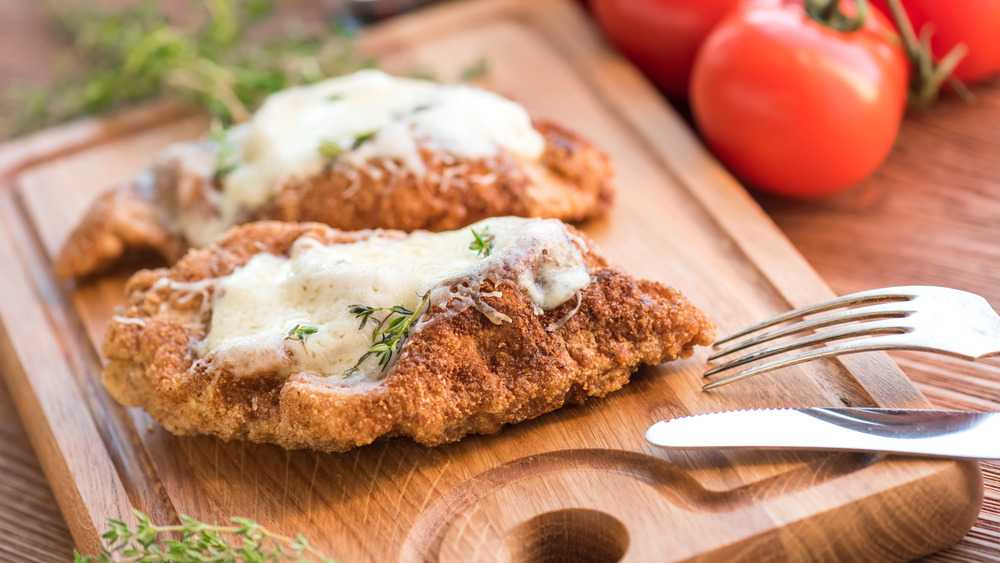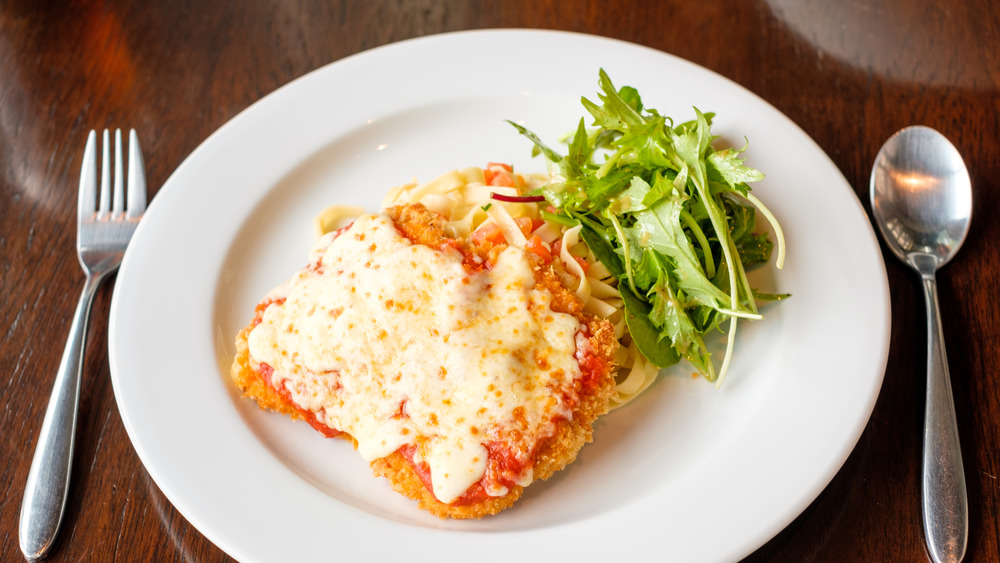Why You Should Skip Chicken Parmesan At A Restaurant
Chicken Parmesan, also known as chicken Parmigiana, is a dish that's full of wholesome of chicken and cheese, coupled with breadcrumbs and delicious sauce. As Broadsheet very helpfully tells us, no one is certain as to who was responsible for actually coming up chicken Parmesan in the first place. If you're thinking about the dish's Italian side, it's believed to have come from Italy's southern regions, and includes a number of typical ingredients such as tomato, cheese, basil, and fried eggplant. Some suggest its roots go all the way back to the 17th and 18th centuries.
According to The Cookful, chicken Parmesan has managed to become immensely popular over the years all across the globe. Bars in Australia proudly serve the dish, while in the U.S., it's commonly referred to as chicken Parm, often delivered to customers with a serving of delicious pasta or bread. You could even eat as a part of your sandwich, as the Australians do as chicken schnitzel. Yummy.
But wait, take a deep breath. We have bad news for you. You really shouldn't ask for the chicken Parm if you're in a restaurant, no matter how tempted you are. This is why.
It doesn't taste right
Objectively speaking, we know that chicken Parmesan sounds amazing. How could it not? Nevertheless, it's the last thing you should consider ordering from a restaurant. More often than not, it's simply not the fresh dish you're expecting it to be. As per Salon, the chicken Parmesan at most restaurants isn't up to the mark in terms of taste and quality. Phil Pretty, a chef from Restauration in Long Beach, California, explained to Salon that he'd be okay with sampling most chicken dishes at an eatery, but not chicken Parmesan. "It's always frozen before cooked and tastes like a gross version of chicken nuggets," he said. Ugh.
What you could do instead is follow one of the countless recipes on the web that allow you to come up with a chicken Parmesan variation of your own — some culinary creativity. Plus, you'll be able to make the dish healthier by employing high-quality ingredients and being judicious about your use of high-calorie options. It's a win-win, isn't it?

